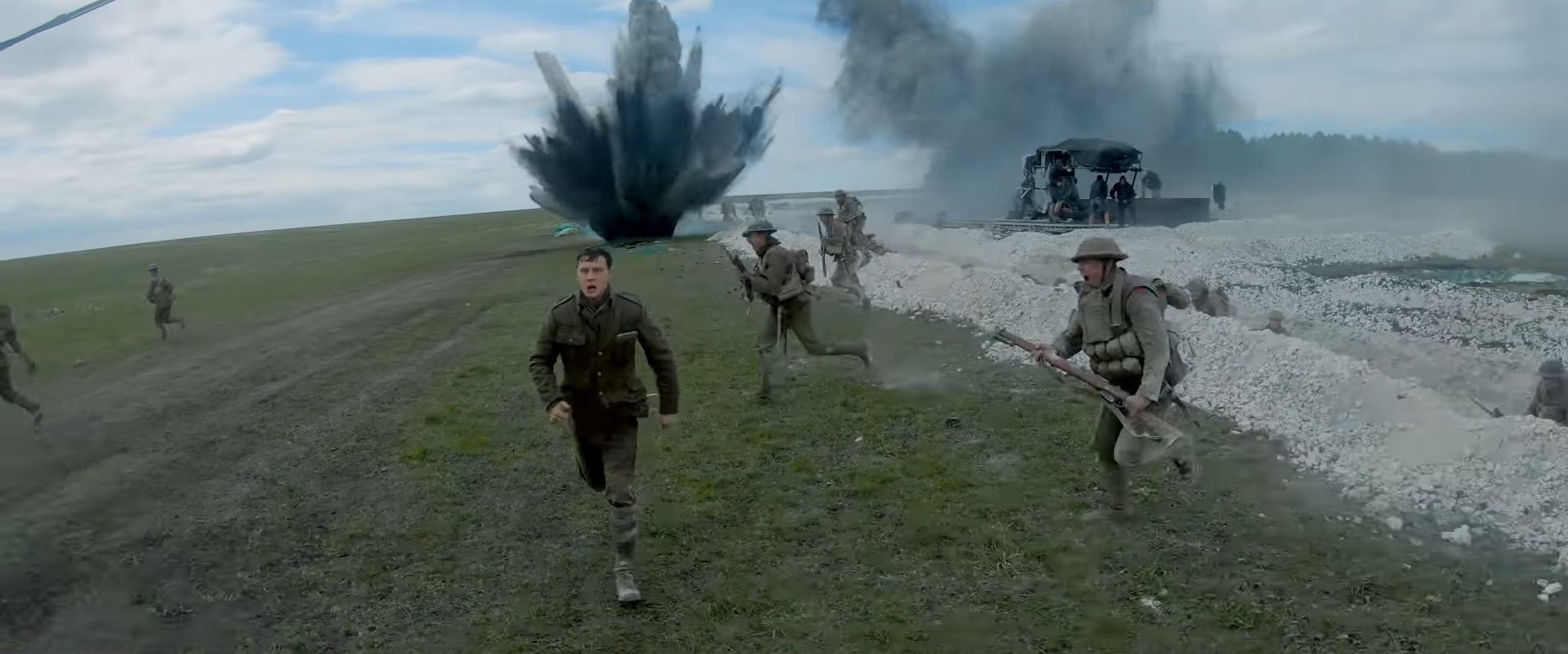
What is it that makes a hero? Most people would agree that heroism requires displays of bravery and courage in the face of adversity that most people would shy away from, but does motivation matter when crowning someone a hero? If you’re embarking on heroic acts out of obligation, is it as impactful as it would be if those same acts originated from pure selflessness? The latest film from director Sam Mendes touches upon this question. 1917 is a tale that takes place during World War I after two British soldiers Lance Corporal Schofield (George MacKay) and Lance Corporal Blake (Dean-Charles Chapman) are told to embark on a seemingly impossible mission to trek through enemy territory and deliver a message informing their fellow soldiers and their leaders that they are being baited into executing an attack that would turn them into sitting ducks and potentially kill 1,600 in the company, including Blake’s brother Joseph (Richard Madden). The two soldiers race against time to save their peers.
Narratively, 1917 is an exploration of what it means for people to feel a sense of duty toward something. In a general sense, serving as a soldier during wartime is dutiful in and of itself, but the characters we follow in the film also have personal obligations that are driving their actions throughout. For Lance Corporal Blake, apart from completing the task assigned to him, the motivation of potentially saving his brother from certain doom by warning of the Germans’ baiting of the British forces drives him to embark on the perilous journey across enemy lines. For Lance Corporal Schofield, the mission takes on an added sense of importance after Blake’s death, making its completion a way to honor their friendship and finish what he started and save his brother. These arcs call to mind the symbiotic relationship between duty and heroism, with the former often driving the latter and playing an important role in inspiring people to rise to the occasion and achieve extraordinary things, as we see in this film. Most people would probably argue that heroism requires one going above and beyond their duty, with that transcendence creating the idealized bravery. And while that may be partly true, there is something admirable in accepting responsibility for something, as Lance Cpls. Schofield and Blake do in 1917, and doggedly carrying out said responsibilities and ensuring their completion.
In the lead up to its release, the anticipation for 1917 centered heavily on its inventive technical aspects most notably editing its shoot to appear to have been done in one single take. While cinema’s greatest living cinematographer Richard Deakins did a fantastic job shooting the film, I found myself more struck by the remarkable production design present in the film. Director Sam Mendes and production designer Dennis Gassner outdid themselves in recreating sets of bombed out buildings, trenches, and other sets that replicated what the war-torn European countryside may have looked like 100+ years ago. The recreation of the environment the film is centered upon plays a pivotal role in making 1917 feel alive. Deakins still displays his mastery of the camera in the film, not just through the one-take style shoot, but also with his use of light and the sharp camera movement on display. The ground level vantage point used as Schofield and Blake cross No Man’s Land at the beginning of their journey is not only beautifully shot, but provides stunning detail of the horrors of war on the human condition.
1917 does a good job of building tension throughout, culminating in a white knuckle third act as you watch Lance Cpl. Schofield sprint to finish his mission right down to the final second. The film’s depiction of war is also notable not just for its seldom used WWI setting, but also in how it portrays its brutality throughout, most notably as Schofield and Blake cross No Man’s Land. While its cinematography displays the excellence we’ve come to expect from the great Richard Deakins, but the months long hype it has received for its one-take style presents nothing new that we haven’t seen previously in films like 2014’s Birdman or 2015’s Victoria. It has been a little baffling to see its awards season nominations and wins powered by this technical aspect when it is largely rote and repetitive. Nonetheless, 1917 has a quality theme that is well portrayed and executed and a visual style that pops on the big screen. In an era where moviegoers are being pushed out of cinemas and into their living rooms, the release and celebration of a film that must be seen in theaters is a welcome sight, even if it is a sight we’ve already beheld.
Image: Universal Pictures

